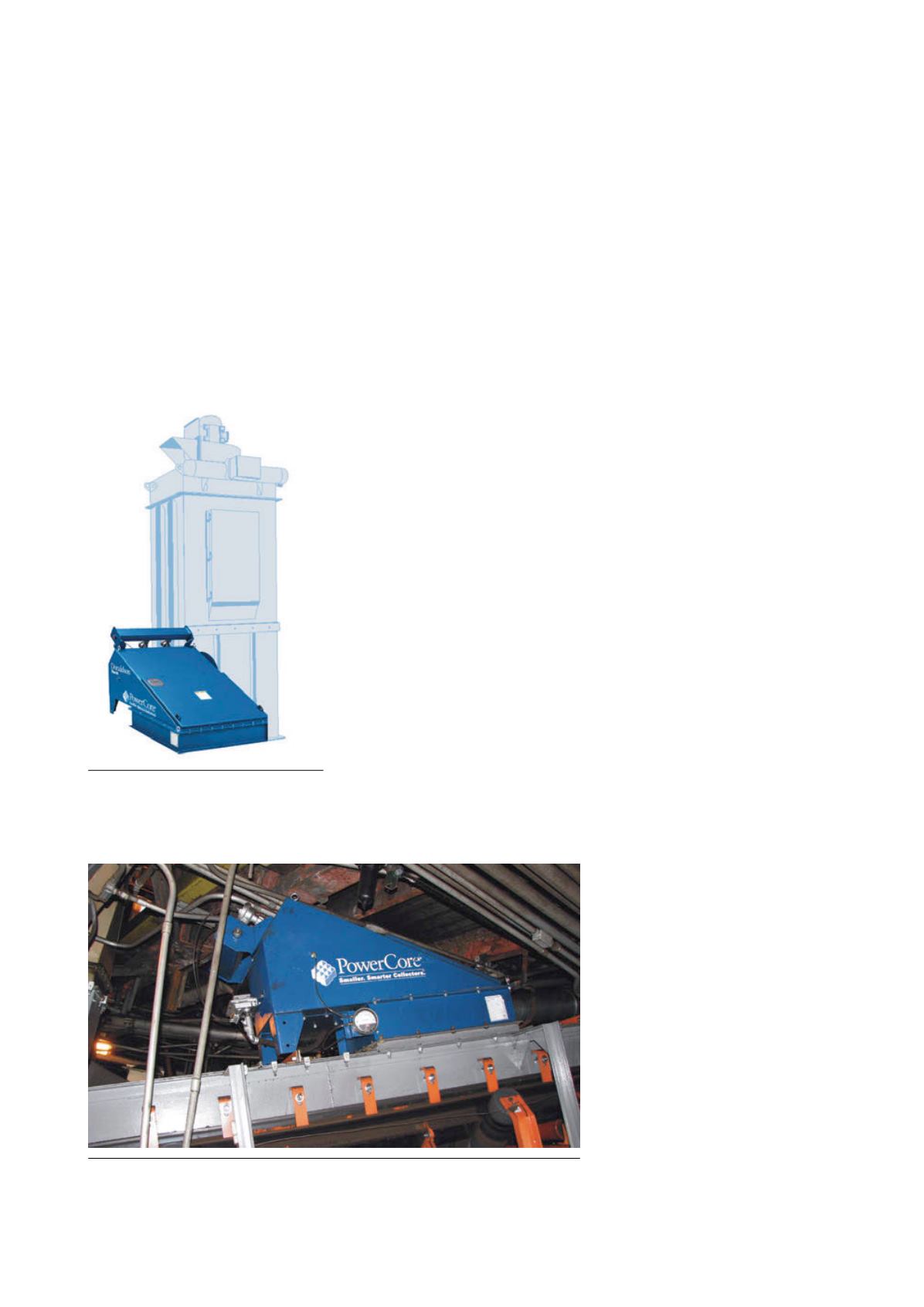
collector configurations consist of
point-of-use localised collectors or
remote centralised collectors, while
overall collector size can vary from
large to compact. Filtration media is
available in bag, cartridge or
filter‑pack styles and filter media
can be cleaned by compressed or
reverse air.
Start collector selection by asking a
few initial questions to set up a
framework from which dust collector
styles can be compared and to
determine which one best meets the
requirements:
n
n
Consider where coal dust is
generated in the facility. Is there only
one dusty location or is it generated
at multiple points throughout the
facility? Can the dust from multiple
points mix in one large dust
collector or does the dust need to
be kept separated due to different
disposal requirements?
n
n
Is there space for dust collection
equipment or does it need to be
inserted around an existing process
line? If space is at a premium, can a
smaller dust collector be inserted on
the transport line? Newer‑style dust
collectors allow for a point‑of‑use
concept to be applied directly on
transport lines, minimising the
amount of space required.
n
n
What are the local weather
conditions for the facility? Are there
any concerns with an outdoor dust
collector location? For example,
would an indoor dust collector
be preferred due to freezing
temperatures?
n
n
Is compressed air available at the
dust collector location? Does it
already exist in the facility or would
it need to be added if the dust
collector required it?
Dust collected during material
transport can either be returned to the
process at the point it was generated
(point-of-use collection) or sent to a
centralised dust collector located away
from the process. To limit the total
number of dust collectors in a facility, a
centralised dust collector will typically
be considered first. But is there space
available for a large dust collector near
the dust generation points? If not, the
dust collector may need to be located a
long distance away from the collection
point to accommodate the size of the
dust collector. When dust collectors are
located further from the dust
generation point, they require a good
duct system design to prevent dust
from settling out in the ducts. The
distances involved can increase the
amount of duct maintenance needed to
ensure the duct is in good condition, as
well as increasing the fan size and
operational horsepower requirements.
When selecting between point‑of‑use
or centralised dust collectors, consider
the benefits of each type and determine
which would be the best fit to the
required application.
Point-of-use dust
collectors
Benefits from a point-of-use dust
collector strategy include smaller
equipment footprints, reduction or
elimination of waste streams,
reduction or elimination of duct runs
and associated maintenance, as well as
simplified and easier installation.
Newer point-of-use dust collectors
have very small footprints and use
small filter packs. The latest design in
point-of-use dust collector technology,
the Torit
®
PowerCore
®
CPV from
Donaldson (Figure 1), can squeeze into
the tight spaces in existing facilities
due to its compact design as compared
to older, larger baghouse technology.
This collector can often be placed
directly on enclosed transport
conveyor belts depending on the
facility requirements. This style of
dust collector has been used to retrofit
existing facilities that did not have
dust collection initially and needed to
add it due to a process change but
were limited by available space
(Figure 2). They have also been used
on new facility designs to minimise
the space needed for dust collection
and provide faster, easier
maintenance, as the small filter packs
are replaced from the clean side of the
dust collector and do not require
confined space entry.
Figure 1. The latest designs in
point‑of‑use dust collector technology
require less floor space compared to
older, larger baghouse technology.
Figure 2. The Torit
®
PowerCore
®
CPV can be placed directly on enclosed transport
conveyor belts to minimise space requirements.
58
|
World Coal
|
March 2016


